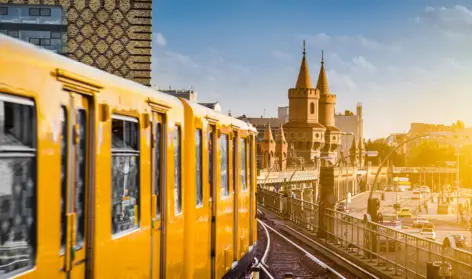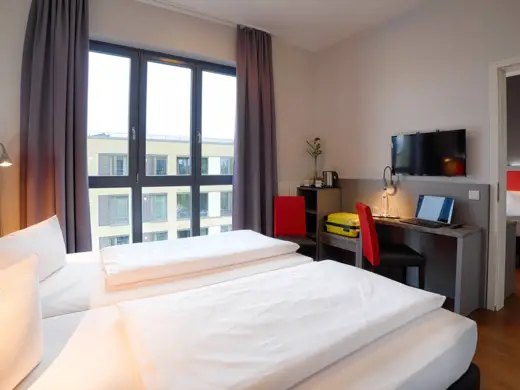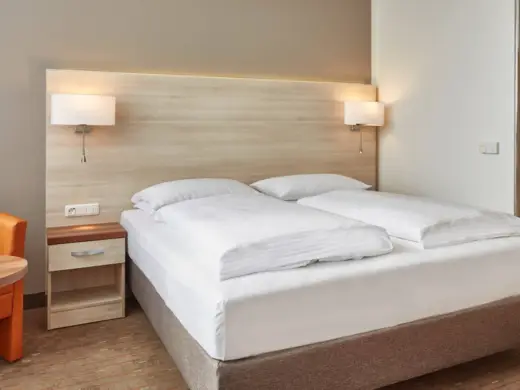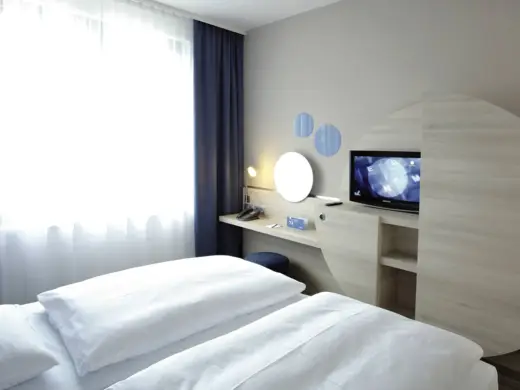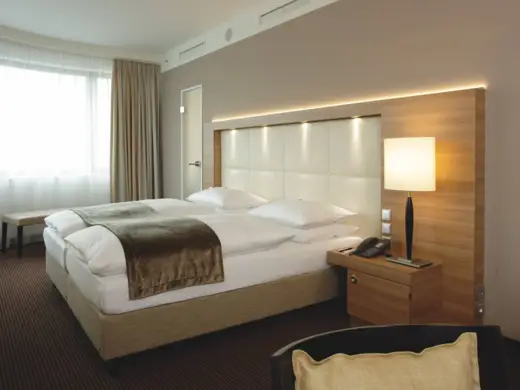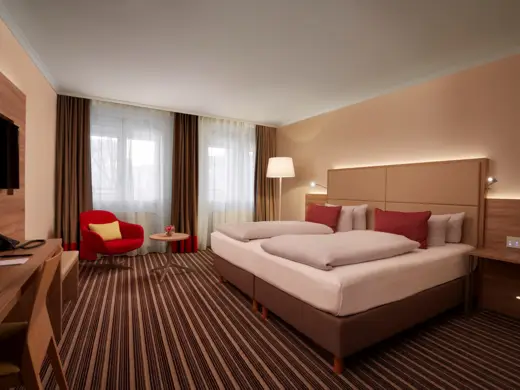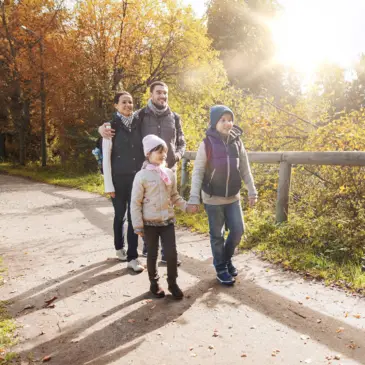City break Berlin – steeped in history and urban sophistication | H-Hotels.com
Berlin is one of the most interesting and varied travel destinations in the whole of Europe. This huge city on the river Spree attracts millions of visitors on city breaks each year. In addition to well-known Berlin tourist attractions, such as the Brandenburg Gate, the Reichstag building or the television tower at Alexanderplatz, Berlin offers a very special attitude to life: alternative, cosmopolitan and urban.
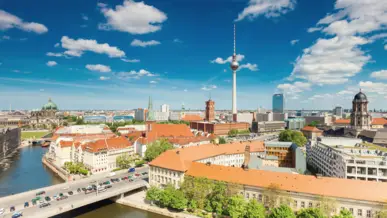
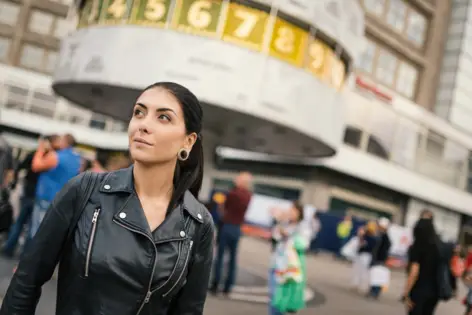
A city break in Berlin is always a journey through the history of the 20th century too. Museums, exhibitions and the remains of the Berlin Wall are a powerful reminder of the era when Germany was divided. Hardly any other city can rival Berlin in terms of such a perfect blend of past, present and future. It is well worth exploring the varied nightlife, the international restaurant and bar scene, and the distinctive local neighbourhoods in different parts of Berlin. In summer, visitors can enjoy a leisurely trip to unwind at the Strandbad Wannsee or the Tempelhofer Feld.
We have put together some information for your city visit here. Discover the city’s sights and attractions, climb one of the many viewpoints and make sure you visit one of the top-class Berlin museums. We hope you have a stimulating trip to the capital city and would love to welcome you at our Berlin hotel!
Discover Berlin – book Berlin hotels now at unbeatable prices!
Find top hotels in Berlin – at guaranteed best prices!
City break Berlin: what are the must-see attractions?
During your trip to Berlin, you are bound to have an extensive sightseeing tour on your schedule. Most of the tourist attractions are in Berlin’s city centre. Here, we give you a quick overview of the most important and best-known sights in Berlin.
The television tower at Alexanderplatz is definitely one of Berlin’s most famous landmarks and can be seen from all over the city. Designed during the 1950s, the tower was opened in 1969 after a four-year construction period. At exactly 368 metres, it is the tallest building in Germany. The tower includes a sphere at almost 203 metres containing a viewing platform and bar. Above this is the famous rotating restaurant, which completes a 360-degree rotation every 30 to 60 minutes.
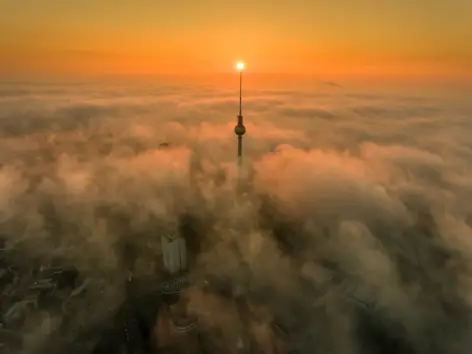
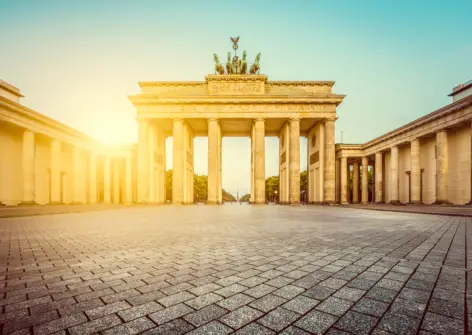
A visit to the Brandenburg Gate takes in what is probably the capital city’s most important landmark. As a symbol of the city’s past, present and future it is unrivalled. It is located on Pariser Platz, at the end of the magnificent boulevard Unter den Linden, and was built in the late 18th century. In the past, only the Kaiser was allowed to travel through the centre of the gate, while the masses used the side passageways.
During the Cold War period, the Brandenburg Gate was in the middle of the GDR restricted zone. It was only accessible to border guards and became a symbol of German partition. From 1990, the significance of the Brandenburg Gate changed as it came to represent the fall of the Berlin Wall and reunification. A visit to the Brandenburg Gate is essential on any Berlin city break.
The Hackesche Höfe is a notable courtyard complex that was reopened in the early 20th century. The courtyards continue to be used today by all sorts of traders. A diverse range of cultural events and accommodation can also be found there. The residential complex is a particular highlight and is also open to visitors during the day. Little shops plus the extensive and innovative culinary options make the Hackesche Höfe a popular destination for tourists from all over the world.

Hackesche Höfe
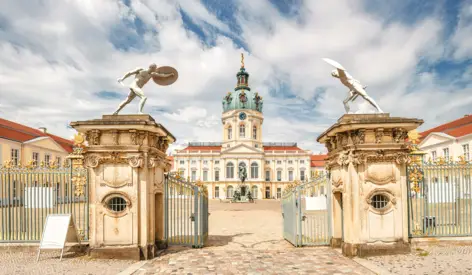
The magnificent former summer residence of the Hohenzollern dynasty can be found in the Charlottenburg district of Berlin. Schloss Charlottenburg was constructed over several decades from the end of the 17th century and still represents an impressive example of the splendour of that period. Attractions at Schloss Charlottenburg include the Hohenzollern family's silver chamber and the magnificent new wing. During the Christmas period, the palace square provides an impressive backdrop for a wonderful Christmas market, which is reason alone to visit the city.
Modern, exciting, and always something going on: Potsdamer Platz has been transformed in the wake of reunification. With the Sony Center, Forum Tower, Kollhoff Tower and Bahntower, this area represents modern Berlin in the 21st century. This is also where you will find the German Film Museum, which offers a journey through German film history with its extensive display of original exhibits. The Bluemax theatre, which opened in 2007, is also home to the Blue Man Group. Make sure your trip to Berlin includes a visit to Berlin’s “Boulevard of Stars” at Potsdamer Platz — Berlin’s equivalent to the Hollywood Walk of Fame.
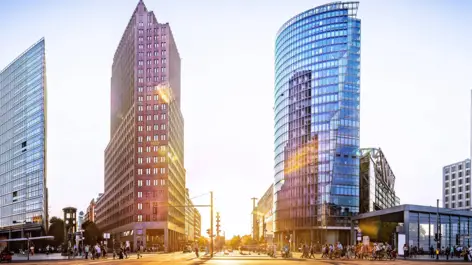

Reichstag
The German capital’s administrative district, including the Federal Chancellery and Reichstag, is located directly on the river Spree in the heart of Berlin. A visit to the Reichstag offers an interesting insight into the country’s political activities. The glass dome of the Reichstag can also be visited by appointment.
Not far from the Reichstag is the Federal Chancellery, which is known affectionately by Berliners as the “washing machine” thanks to its appearance. This is where the acting Chancellor receives state visitors and convenes cabinet meetings. Once a year, the Chancellery also opens its doors to the public. The same is true for other ministry buildings in Berlin.
Some of the city’s most important museums are located on the Spreeinsel (Spree Island). The unique collection of museum buildings on the island includes the Altes Museum, Neues Museum, Old National Gallery, Bode Museum, Pergamon Museum, Kolonandenhof and James Simon Gallery. For just 18 Euro, you get admission to all the exhibitions on the island. The sole exception is on a Monday, when only the Pergamon Museum and Neues Museum are open.
The Pergamon Museum is said to be the best museum in Berlin. Use your city break in Berlin to take in the exhibitions about antiquity and the Orient at the Pergamon Museum.
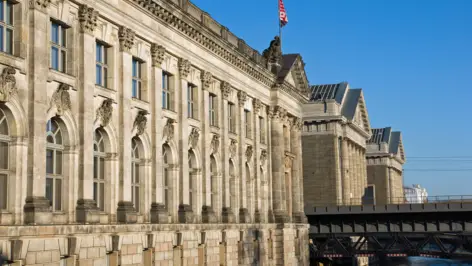
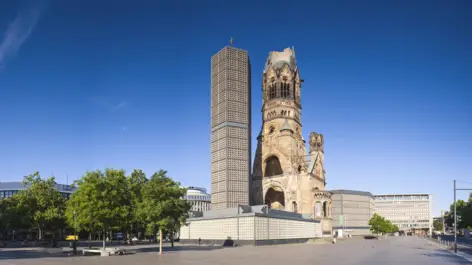
The 3.5 kilometre Kurfürstendamm (also known as Ku‘damm for short) offers a chance to explore Berlin’s best known grand boulevard. Designer shops, classy boutiques and pavement cafés dominate the streetscape. At the eastern end of the Kurfürstendamm is the Gedächtniskirche, another city landmark.
The KaDeWe (Kaufhaus des Westens) is both a tourist attraction and a shopping extravaganza. The history of this famous department store goes back to 1907. Located right next to Wittenbergplatz, the shop continues to exude its unique Gründerzeit charm (typical of the period when it was founded). You can shop to your heart’s content over seven floors and a total of 60,000 square metres. A genuine highlight is undoubtedly the deli department, which showcases delicious food from all over the world. More food is on offer at the KaDeWe Restaurant, which is located on the top floor under a glass dome.

Where do you get the best views of Berlin?
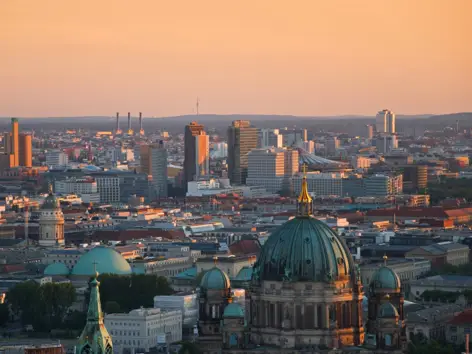
Looking down on Berlin from above and getting a very different perspective on the city’s diversity: there are all sorts of options for enjoying a fabulous panoramic view of the capital during your Berlin city break. Needless to say, the television tower at Alexanderplatz is a particularly good choice. The view over central Berlin and the rest of the capital is impressive.
From the dome on the Reichstag building, you can look directly over the administrative district. This reinforces just how extensive this area is when you include the Federal Chancellery, Paul-Löbe-Haus, Marie-Elisabeth-Lüders-Haus and Jakob-Kaiser-Haus (which is where some German parliamentary representatives have their offices).
The Hi-Flyer tethered balloon takes you about 150 metres above ground and over the city rooftops. Visitors look down from on high over Berlin’s city centre, discovering the famous Checkpoint Charlie as they do so. The trip takes around 15 minutes and is a definite recommendation for any visitor to Berlin.
Experience German history up close on a city break to Berlin
A trip to Berlin is always a journey through history. Berlin reflects Germany’s turbulent history like almost no other city in the country. After all, from 1961 to 1989 Berlin was a symbol of German partition. You can search for traces of this past across the entire city, but especially along the former inner-German border.
The East Side Gallery is a particularly good example. This involves a genuine section of Berlin Wall, which now serves as a kind of open-air exhibition. Located in Berlin Friedrichshain, between Oberbaumbrücke and Ostbahnhof, the East Side Gallery is a popular destination for lots of tourists. Artists have created all sorts of artworks on the remaining wall. In future, it is planned for more information to be available to visitors about the Berlin Wall and its history.
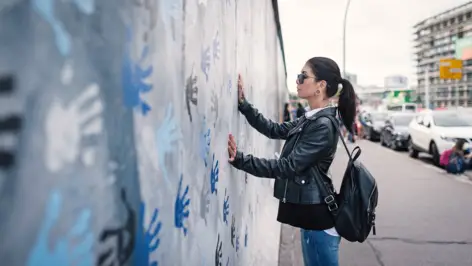
East Side Gallery
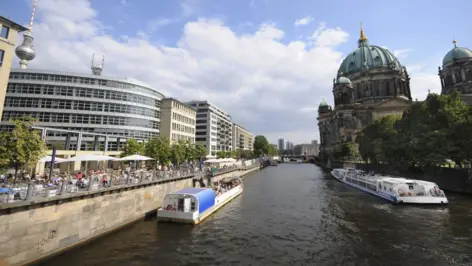
The DDR Museum offers a fascinating insight into the everyday lives of former GDR citizens. The museum can be found in Dom Aquarée (in Berlin Mitte). The aim of the exhibition is to give an authentic impression of this era without indulging in nostalgia. For example, you can visit a replica prison cell, including a Stasi listening room.
The name Tränenpalast (Palace of Tears) is no accident. This former border crossing point at Friedrichshain station was the cause of tears for many GDR citizens. This is where they bid farewell to visiting friends and relatives from the West, while not being permitted to travel out themselves. At the Tränenpalast, you can also visit the permanent exhibition “Everyday life in divided Germany”.
The Holocaust Memorial is a reminder of humanity’s darkest and most terrible period in German history, with its millions of innocent victims. The memorial was designed by Peter Eisenmann. Over an area of around 19,000 square metres, he installed 2711 concrete pillars. Set aside some time during your trip to pay a visit. There is an impressive stillness and isolation between the blocks that has a profound impact on many visitors.
The history of West Berlin between 1945 and 1989 is closely connected to its western allies in the USA, Great Britain and France. This story is related by the Allied Museum in Dahlem. Historical aircraft, the last guard house from the legendary Checkpoint Charlie, and many other exhibits offer a detailed insight into this period.

Checkpoint Charlie
The best museums in Berlin – well worth a visit!

Did you know that Berlin is home to more than 175 museums? There are bound to be museums that you would like to visit during your trip to Berlin. Perhaps it’s art or history, the Orient or the GDR, natural history, technology or anatomy. There is a huge variety of museums in Berlin. If you want to add a touch of culture to your Berlin city break, the museums are essential!
Pergamon Museum
The Pergamon Museum takes you on an archaeological voyage of discovery. The Ishtar Gate, Mshatta Façade and Pergamon Altar are among the key tourist attractions here. To avoid long queues, it is worth buying a timed ticket slot. These can be booked online.

Old National Gallery
The Old National Gallery mainly holds artistic works from the 19th century. These include the famous painting In Summer by Pierre-Auguste Renoir. The Old National Gallery is part of the Museum Island, and visitors will also enjoy its stylish architecture. The imposing equestrian statue of Friedrich Wilhelm IV can be seen even from far away. The museum setting looks particularly impressive during evening hours.
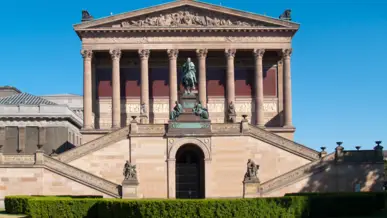
Natural History Museum
The Natural History Museum close to Berlin’s main station is one of the oldest establishments of this kind in the whole city. It boasts over 30 million objects, one of the most extensive natural history collections in Germany. You can immerse yourself in the distant history of the earth and admire giant dinosaur skeletons.
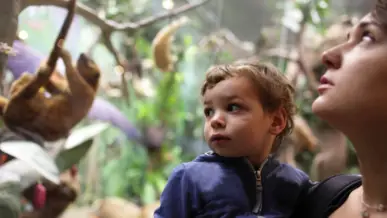
Berlin Wall Memorial
The memorial in Bernauer Straße includes a documentation centre and an extensive outdoor area. This is a reminder of German partition up to 1989. The centrepiece is a 70-metre section of original Wall. In total the area is about 1.4 kilometres long. The window of remembrance (“Fenster des Gedenkens”) leaves a particularly deep impression. This shows portraits of people who died at the Wall when trying to flee the GDR.
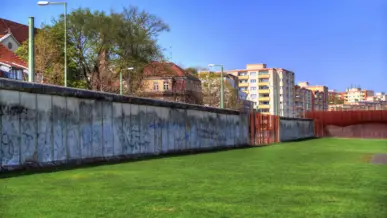
Body Worlds museum
As museums go, it is hard to rival the controversial nature of Body Worlds. The exhibition experience involves genuine human bodies that have undergone plastination. Berlin’s permanent exhibition is housed in the MeMu People Museum in the converted base of the television tower in Alexanderplatz. There are special guided tours for groups in addition to temporary exhibitions.
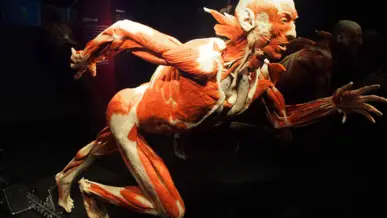
Where can people go shopping in Berlin?
Berlin is a true shopping metropolis. Are you keen for your trip to Berlin to be an extensive shopping spree? You will find the capital is home to sophisticated designer shops, or you can take a leisurely stroll through the smaller boutiques or countless flea markets the city has to offer. Needless to say, a trip to KaDeWe is also essential. In addition, lots of people will be tempted by the range of shopping malls with a huge selection of stores and catering outlets.

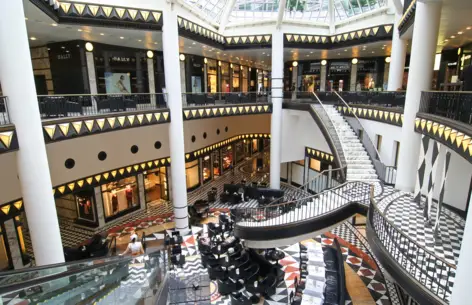
Sophisticated boutiques and designer stores can be found along the Kurfürstendamm and Friedrichsstraße, amongst other places. At Kaufhaus des Westens (KaDeWe) you can enjoy the special atmosphere of this palatial department store, which first opened its doors in the early 20th century.
At Alexa on Alexanderplatz you will find one of Berlin’s largest shopping centres. The five-storey building is home to over 180 shops and 17 catering businesses. Another very special shopping environment is offered by the Mall of Berlin, located immediately off Leipziger Platz.
The Mall of Berlin covers an area of more than 210,000 square metres and has about 300 shops. The vast shopping emporium also contains a hotel, residential properties and offices. This popular business and commercial centre is in the exact place where the renowned Wertheim department store was located around 100 years ago. The creators of the mall have successfully translated this special aura to the new centre.
The Potsdamer Platz Arkaden extend over 40,000 square metres and are another option for an extended shopping trip during your city visit. The ideal location on Potsdamer Platz, in the heart of the city, ensures this shopping centre is very easy to access.
Berlin is a real flea market city. There are special markets for clothing, books, vinyl records and antiques. A colourful assortment of items can be found at the Mauerpark Flea Market, which is a real insider’s tip for your city break. This is one of the most popular markets in Berlin, both with locals and tourists. The flea market takes place every Sunday between 10 am and 6 pm.

Potsdamer Platz
A big-city vibe in Berlin’s best-known squares
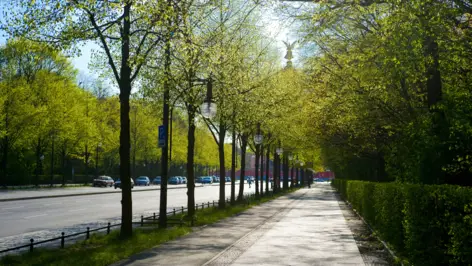
Tiergarten
Berlin is very unusual in terms of its urban structure. There is no proper centre but instead lots of local neighbourhoods that are relatively autonomous. Each borough (or “Kiez” as they are known in German) exudes its own unique atmosphere. You can get a good impression of this by exploring the different main squares during your city break.
One of the most famous squares is no doubt Alexanderplatz in the centre. This was laid out as early as the 17th century and redesigned in the 1960s. The worlds of art and literature have always been fascinated by its special atmosphere. A good example is the novel Berlin Alexanderplatz, by Alfred Döblin, which was published in 1929.
Every trip to Berlin should include a visit to Pariser Platz. This is also where the Brandenburg Gate is located. Since 1734, people have been sauntering around the historic Pariser Platz. The famous Hotel Adlon is here too. Pariser Platz is just a few minutes’ walk from the Reichstag.
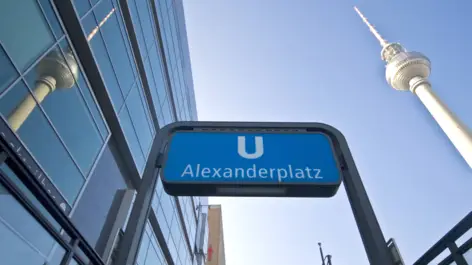

Hackescher Markt
In the Spandauer Vorstadt in central Berlin, you will find Hackescher Markt square. This is regarded as the creative heart of the city with all sorts of designer shops and flagship stores. A varied array of restaurants and other food outlets have also established themselves here. Particularly in the evening, the Hackescher Markt is a hive of activity. This square is also an ideal starting point for exploring Berlin’s thrilling nightlife.
In close proximity to Breitscheidplatz (Charlottenburg) are a number of well-known tourist attractions. These include the Gedächtniskirche, Kurfürstendamm and Europa Center. The square itself was designed in the late 19th century and has undergone some drastic changes over the intervening years. Nowadays Breitscheidplatz has a very modern appearance but without totally disregarding its past. The same can be said of the Zoo Palast, which is also found on Breitscheidplatz.
City break in Berlin: facts about the capital city
Berlin is home to over 3.6 million people. The city covers an area of 981.8 square kilometres. Berlin is subdivided into 12 boroughs and 96 districts. The most famous boroughs include Friedrichshain, Prenzlauer Berg, Kreuzberg and Mitte. Berlin is also a very green city, where visitors on a city break will be tempted to linger and relax in the numerous parks and green spaces. Options include the Großer Tiergarten or Kleiner Tiergarten, the Mauerpark and the Volkspark Humboldthain.
In and around Berlin are wonderful lakes, which are equally popular with locals and tourist on mini-breaks. The largest of these is the Müggelsee in Treptow-Köpenick at 7.4 square kilometres. The Wannsee, on the other hand, is probably Berlin’s most famous lake.
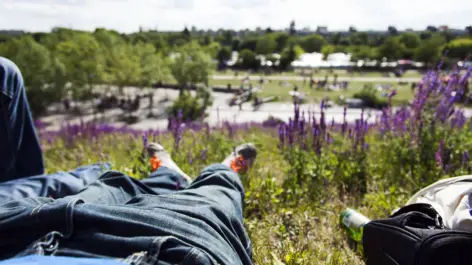
Mauerpark

H4 Hotel Berlin Alexanderplatz
The city’s popularity is also revealed by visitor numbers. In 2018 alone, over 32 million people stayed overnight in Berlin. In addition to tourists, this number includes lots of business travellers and government employees.
Lots of famous people were born in Berlin that have had a significant impact on science, art, politics, sport and culture. These include Alexander von Humboldt (1769), Marlene Dietrich (1901), Nina Hagen (1955), Nora Tschirner (1981) and Jérome Boateng (1988).
Arriving in Berlin
Berlin has an excellent infrastructure. The city’s two international airports, Berlin Tegel and Berlin Schönefeld, provide a gateway to the city for business travellers and tourists. As soon as the BER airport opens, air traffic arrivals and departures will relocate there.
If you arrive by train, you will disembark at the central Hauptbahnhof (main station). From there you can take the S-Bahn, U-Bahn or bus to your hotel. One-day and multi-day tickets are available for local public transport. Our top tip is the 100 bus line. This takes you to lots of the key sights, such as the Gedächtniskirche, Bellevue Palace and Brandenburg Gate.
